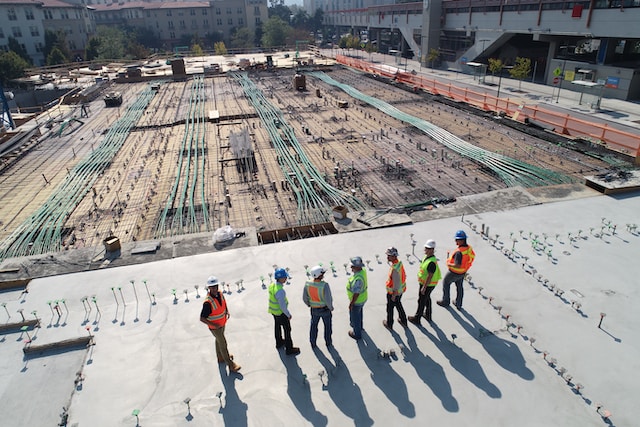
Real Estate Investment Trusts (REITs) are owners, operators, and financers of income-generating real estate properties. It allows real estate market investments without directly purchasing and managing properties.
Different construction trends impact the demand and supply of real estate properties. Consequently, it can affect the performance of REITs that own and operate these properties.
In today’s post, we’ll give you an overview of REITs and examine specific construction trends and their impact on REITs. Let’s dive in and discuss some things that can help you make the right investment decisions.
What Are REITs?
The primary purpose of a REIT is to generate income for its investors through rental income, capital gains, or both. The law requires the distribution of at least 90% of the taxable income of REITs to their investors in the form of dividends, which makes them an attractive investment.
With REITs, individual investors can invest in large-scale, income-producing real estate properties. Since then, REITs have become increasingly popular globally, with several countries adopting legislation to create their own REIT structures.
You’ll find different types of REITs. Equity REITs own and operate income-generating real estate properties, while mortgage REITs invest in mortgages and other real estate debt instruments. Hybrid REITs combine the characteristics of both equity and mortgage REITs.
REITs make investing in real estate possible without the hassles of property management, property maintenance, and other associated costs. Additionally, REITs offer investors the potential for liquidity, as they can be bought and sold like stocks on major stock exchanges.
Specific Construction Trends and Their Impact on REITs
In this section, we’ll explore some trends in the construction market that can influence the performance of REITs.
Sustainable Construction Practices
Over the years, sustainable construction practices became more popular, driven by environmental concerns and the desire for cost savings.
Green buildings, for example, use energy-efficient systems and sustainable materials, resulting in lower operating costs and increased tenant demand. This trend can have a positive impact on REITs that own and operate these types of properties.
REITs can reduce operating costs and increase tenant demand by investing in green properties. As such, it may lead to higher rental income and property values.
Technology Advancements
Technology advancements in construction, such as the use of building automation systems, can improve efficiency and reduce the maintenance costs of real estate properties. This trend can have a positive impact on REITs that own and operate these types of properties.
By adopting these technologies, REITs can reduce operating costs and improve the overall efficiency of property management.
Demographic Shifts
Demographic shifts, such as an aging population, can increase the demand for specialized real estate properties, such as senior housing and healthcare facilities. It can have a positive impact on REITs that own and operate these types of properties.
Investing in these specialized properties allows REITs to take advantage of the increasing demand and potentially earn higher rental income and property values.
Wellness-Focused Properties
Gyms, spas, and other wellness-focused properties are becoming more popular in the real estate industry.
By investing in wellness-focused properties, REITs can potentially tap into this growing market and benefit from increased demand and the potential for higher rental income and property appreciation.
Modular Construction
This method involves constructing modules off-site and then assembling them on-site, which can significantly reduce construction time and costs and increase construction efficiency.
REITs with modular construction properties can benefit from these advantages. By using modular construction, REITs can potentially reduce construction time and costs, which can lead to faster rental income generation and potentially higher returns. Additionally, modular construction can be used to build properties in areas with limited construction resources, such as remote or densely populated areas.
Mixed-Use Developments
These developments typically include a combination of residential, commercial, and retail spaces in one building or complex, and can be located in urban or suburban areas.
The diverse tenant mix in these developments can lead to increased rental income and potentially higher returns.
Further, the potential for higher foot traffic in mixed-use developments can benefit commercial and retail tenants.
Choosing REITs to Invest In
Clueless about the REITs to invest in? The choices abound, but this does not mean you can pick any and expect favorable outcomes.
Evaluate the Management Team
The management team of a REIT is crucial to its success. Investors should research the experience and track record of the management team to ensure they have a successful track record of managing real estate properties and creating value for investors.
Evaluate the REIT’s Portfolio
Examine the portfolio to ensure they align with their investment goals. Consider the location, property type, and tenant mix to ensure the properties are well-positioned to generate rental income and that the value will appreciate over time.
Consider the Dividend Yield
REITs are required to distribute at least 90% of their taxable income to their investors in the form of dividends. Investors should consider how much exactly the dividend yield is to forecast how much they can make.
Look at the Financial Performance
Evaluate the REIT’s financial performance to ensure it’s financially stable and well-positioned to weather market downturns. Review the REIT’s financial statements, including its income statement, balance sheet, and cash flow statement, to ensure it’s generating sufficient rental income and maintaining a strong balance sheet.
Forecast Growth Prospects
Look at the growth prospects to ensure it’s well-positioned to capitalize on future opportunities. Consider the REIT’s pipeline of properties under development or acquisition to ensure it’s positioned for future growth.
Consider the Impact of Construction Trends
Assess the impact of construction trends on the REIT’s portfolio of properties. For example, if sustainable building practices are a significant trend in the real estate market, evaluate if the REIT’s portfolio includes green buildings. If the REIT is well-positioned to benefit from construction trends, it may be a more attractive investment opportunity.
Conclusion

Photo by Scott Blake from Unsplash
Investors looking to invest in REITs must understand the connection between construction trends and real estate investment.
Sustainable building practices, technological advancements, and demographic shifts are some of the significant trends that are shaping the real estate industry and impacting the performance of REITs. By being aware of these trends, investors can identify potential investment opportunities and make informed investment decisions.
